 According to the Halifax house price index, house prices fell in the UK in the three months to April. This is the first quarterly fall since 2012. The Nationwide index (see below), shows that prices in April were 0.4% lower than in March (although the 3-month rate was still slightly positive).
According to the Halifax house price index, house prices fell in the UK in the three months to April. This is the first quarterly fall since 2012. The Nationwide index (see below), shows that prices in April were 0.4% lower than in March (although the 3-month rate was still slightly positive).
The fall in house prices reflects a cooling in demand. This, in turn, reflects a squeeze on household incomes as price rises begin to overtake wage rises. It also reflects buyers becoming more cautious given the uncertainty over the nature of the Brexit deal and its effects on the economy and people’s incomes.
The fall in demand is also driven by recent Bank of England rules which require mortgage lenders to limit the proportion of mortgages with a mortgage/income ratio of 4.5 or above to no more than 15% of their new mortgages. It is also affected by a rise in stamp duty, especially on buy-to-let properties.
Despite the fall in prices, this may understate the fall in demand relative to supply. House price movements often lag behind changes in demand and supply as people are reluctant to adjust to equilibrium prices. In the case of a falling market, sellers may be unwilling to sell at the lower equilibrium price, believing that a lower price ‘undervalues’ their property. Indeed, they may not even put their houses on the market. This makes prices ‘sticky’ downwards. The result is a fall in sales.
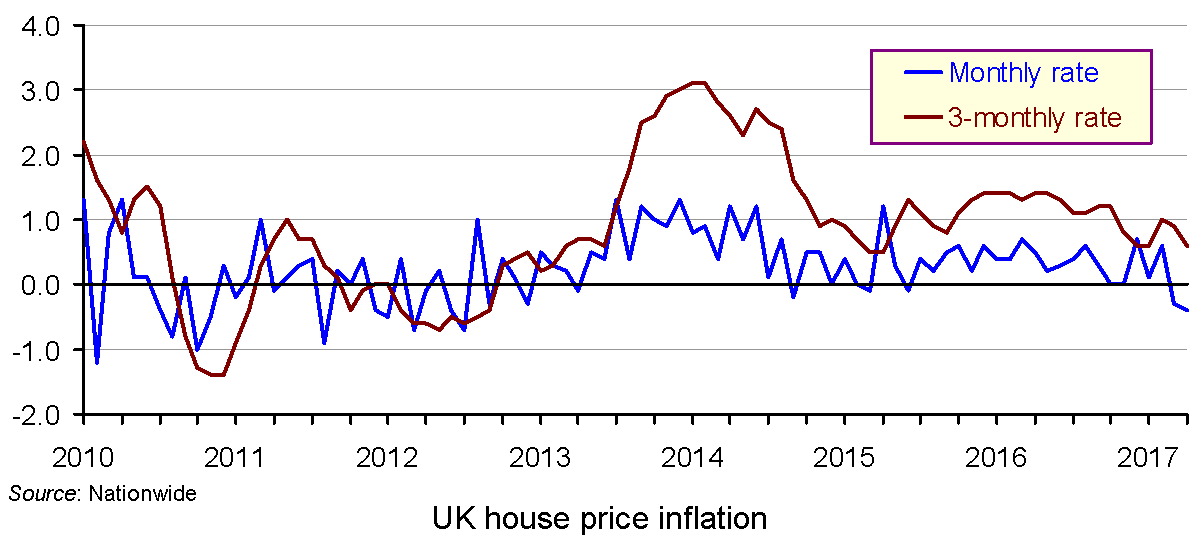
Eventually, such people will reluctantly be prepared to accept a lower price and prices will thus fall more. Once people come to expect price falls, supply may increase further as vendors seek to sell before the price falls even more. So we could well see further falls over the coming months.
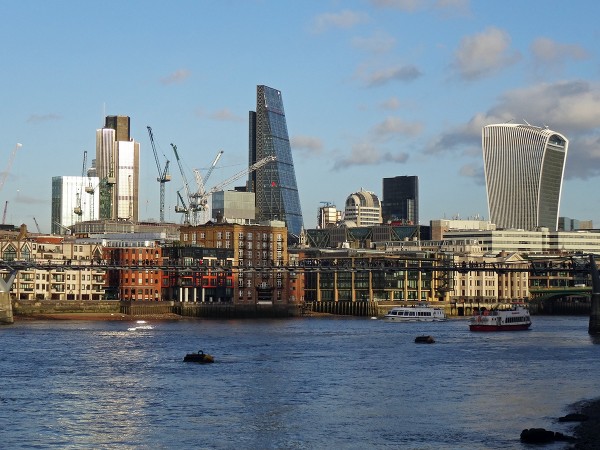 Lower house prices and falling sales is a picture repeated in many parts of the UK. It is particularly marked in central London. There, estate agents have begun to offer free gifts to purchasers. As The Guardian puts it:
Lower house prices and falling sales is a picture repeated in many parts of the UK. It is particularly marked in central London. There, estate agents have begun to offer free gifts to purchasers. As The Guardian puts it:
London estate agents have begun to offer free cars worth £18,000, stamp duty subsidies of £150,000, plus free iPads and Sonos sound systems to kickstart sales in the capital’s increasingly moribund property market. The once super-hot central London market has turned into a ‘burnt-out core’ according to buying agents Garrington Property Finders, prompting developers to offer ever greater incentives to lure buyers.
… Land Registry figures show that in the heart of the city’s financial district, average property prices plummeted from £861,000 at the time of the EU referendum to £773,000 in February, a decline of 15%, although in London’s outer boroughs prices are still up over the year.
But lower property prices are good news for first-time buyers, although some of the biggest falls have been in the top end of the market.
The fall in property prices may continue for a few months. But population is rising, and with it the number of people who would like to buy their own home. Once real incomes begin to rise again, therefore, demand is likely to resume rising faster than supply. When it does, house prices will continue their upward trend.
Articles
UK house prices in first quarterly fall since 2012 BBC News (8/5/17)
UK house prices fall again in April as buyers feel the pinch The Guardian, Angela Monaghan (28/4/17)
Buy a home, get a car free: offers galore as London estate agents struggle to sell The Guardian, Patrick Collinson (3/5/17)
London is now one of the five cities with the lowest house price growth in the UK City A.M., Helen Cahill (28/4/17)
London Housing Market Property Bubble Vulnerable To Crash The Market Oracle, Jan Skoyles (3/5/17)
A key indicator of a healthy housing market is flashing red in London Business Insider, Thomas Colson (29/5/17)
House Price Data
UK House Prices – links to various sites Economic Data freely available online – Economics Network
Questions
- Why are UK house prices falling?
- What determines the rate at which they are falling? How is the price elasticity of demand and/or supply relevant here?
- How does speculation help to explain changes in house prices? How may speculation help to (a) stabilise and (b) destabilise house prices?
- Draw a demand and supply diagram to show how house transactions will be lower if the market is not in equailibrium.
- Why are house prices falling faster in central London than elsewhere in the UK?
- Why are rents falling in central London? How does this relate to the fall in central London property prices?
- How has the Help to Buy scheme affected house prices? Has it affected both demand and supply and, if so, why and how?
- How do changes in residential property transaction volumes relate to changes in property prices?
- What market imperfections exist in the housing market?
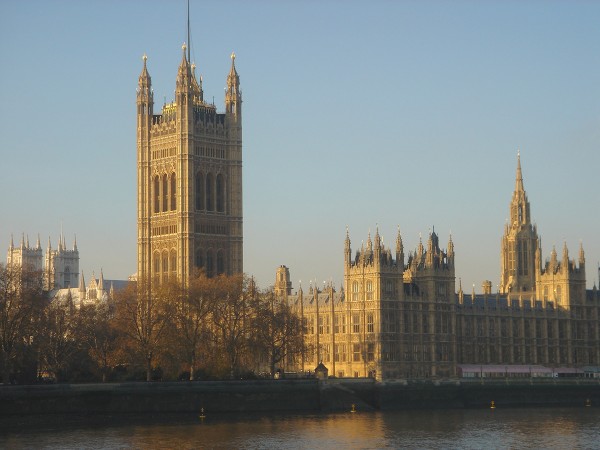 According to the theory of the political business cycle, governments call elections at the point in the business cycle that gives them the greatest likelihood of winning. This is normally near the peak of the cycle, when the economic news is currently good but likely to get worse in the medium term. With fixed-term governments, this makes it harder for governments as, unless they are lucky, they have to use demand management policies to engineer a boom as an election approaches. It is much easier if they can choose when to call an election.
According to the theory of the political business cycle, governments call elections at the point in the business cycle that gives them the greatest likelihood of winning. This is normally near the peak of the cycle, when the economic news is currently good but likely to get worse in the medium term. With fixed-term governments, this makes it harder for governments as, unless they are lucky, they have to use demand management policies to engineer a boom as an election approaches. It is much easier if they can choose when to call an election.
In the UK, under the Fixed-term Parliaments Act of 2011, the next election must be five years after the previous one. This means that the next election in the UK must be the first Thursday in May 2020. The only exception is if at least two-thirds of all MPs vote for a motion ‘That there shall be an early parliamentary general election’ or ‘That this House has no confidence in Her Majesty’s Government.’
The former motion was put in the House of Commons on 19 April and was carried by 522 votes to 13 – considerably more than two-thirds of the 650 seats in Parliament. The next election will therefore take place on the government’s chosen date of 8 June 2017.
Part of the reason for the government calling an election is to give it a stronger mandate for its Brexit negotiations. Part is to take advantage of its currently strong opinion poll ratings, which, if correct, will mean that it will gain a substantially larger majority. But part could be to take advantage of the current state of the business cycle.
Although the economy is currently growing quite strongly (1.9% in 2016) and although forecasts for economic growth this year are around 2%, buoyed partly by a strongly growing world economy, beyond that things look less good. Indeed, there are a number of headwinds facing the economy.
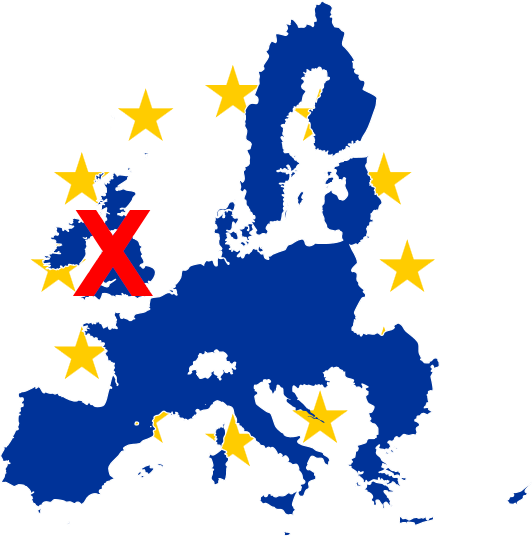 First there are the Brexit negotiations, which are likely to prove long and difficult and could damage confidence in the economy. There may be adverse effects on both inward and domestic investment and possible increased capital outflows. At the press conference to the Bank of England’s February 2017 Inflation Report, the governor stated that “investment is expected to be around a quarter lower in three years’ time than projected prior to the referendum, with material consequences for productivity, wages and incomes”.
First there are the Brexit negotiations, which are likely to prove long and difficult and could damage confidence in the economy. There may be adverse effects on both inward and domestic investment and possible increased capital outflows. At the press conference to the Bank of England’s February 2017 Inflation Report, the governor stated that “investment is expected to be around a quarter lower in three years’ time than projected prior to the referendum, with material consequences for productivity, wages and incomes”.
Second, the fall in the sterling exchange rate is putting upward pressure on inflation. The Bank of England forecasts that CPI inflation will peak at around 2.8% in early 2018. With nominal real wages lagging behind prices, real wages are falling and will continue to do so. As well as from putting downward pressure on living standards, it will tend to reduce consumption and the rate of economic growth.
 Consumer debt has been rising rapidly in recent months, with credit-card debt reaching an 11-year high in February. This has helped to support growth. However, with falling real incomes, a lack of confidence may encourage people to cut back on new borrowing and hence on spending. What is more, concerns about the unsustainability of some consumer debt has encouraged the FCA (the financial sector regulator) to review the whole consumer credit industry. In addition, many banks are tightening up on their criteria for granting credit.
Consumer debt has been rising rapidly in recent months, with credit-card debt reaching an 11-year high in February. This has helped to support growth. However, with falling real incomes, a lack of confidence may encourage people to cut back on new borrowing and hence on spending. What is more, concerns about the unsustainability of some consumer debt has encouraged the FCA (the financial sector regulator) to review the whole consumer credit industry. In addition, many banks are tightening up on their criteria for granting credit.
Retail spending, although rising in February itself, fell in the three months to February – the largest fall for nearly seven years. Such falls are likely to continue.
So if the current boom in the economy will soon end, then, according to political business cycle theory, the government is right to have called a snap election.
Articles
Gloomy economic outlook is why Theresa May was forced to call a snap election The Conversation, Richard Murphy (18/4/17)
What does Theresa May’s general election U-turn mean for the economy? Independent, Ben Chu (18/4/17)
It’s not the economy, stupid – is it? BBC News Scotland, Douglas Fraser (18/4/17)
Biggest fall in UK retail sales in seven years BBC News (21/4/17)
Sharp drop in UK retail sales blamed on higher prices Financial Times, Gavin Jackson (21/4/17)
Shoppers cut back as inflation kicks in – and top Bank of England official says it will get worse The Telegraph, Tim Wallace Szu Ping Chan (21/4/17)
Retail sales volumes fall at fastest quarterly rate in seven years Independent, Ben Chu (21/4/17)
Statistical Bulletin
Retail sales in Great Britain: Mar 2017 ONS (21/4/17)
Questions
- For what reasons might economic growth in the UK slow over the next two to three years?
- For what reasons might economic growth increase over the next two to three years?
- Why is forecasting UK economic growth particularly difficult at the present time?
- What does political business cycle theory predict about the behaviour of governments (a) with fixed terms between elections; (b) if they can choose when to call an election?
- How well timed is the government’s decision to call an election?
- If retail sales are falling, what other element(s) of aggregate demand may support economic growth in the coming months?
- How does UK productivity compare with that in other developed countries? Explain why.
- What possible trading arrangements with the EU could the UK have in a post-Brexit deal? Discuss their likelihood and their impact on economic growth?
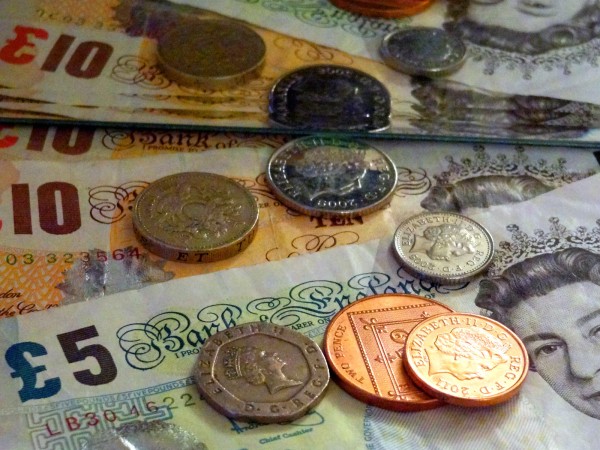 The latest figures from the ONS show that UK inflation rose to 2.3% for the 12 months to February 2017 – up from 1.9% for the 12 months to January. The rate is the highest since September 2013 and has steadily increased since late 2015.
The latest figures from the ONS show that UK inflation rose to 2.3% for the 12 months to February 2017 – up from 1.9% for the 12 months to January. The rate is the highest since September 2013 and has steadily increased since late 2015.
The main price index used to measure inflation is now CPIH, as opposed to CPI. CPIH is the consumer prices index (CPI) adjusted for housing costs and is thus a more realsitic measure of the cost pressures facing households. As the ONS states:
CPIH extends the consumer prices index (CPI) to include a measure of the costs associated with owning, maintaining and living in one’s own home, known as owner occupiers’ housing costs (OOH), along with Council Tax. Both of these are significant expenses for many households and are not included in the CPI.
But why has inflation risen so significantly? There are a number of reasons.
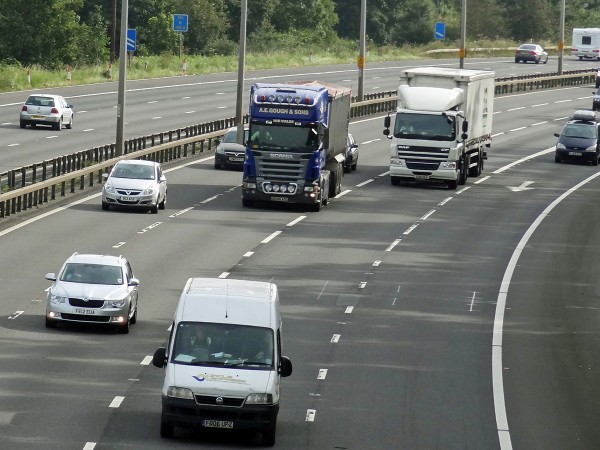 The first is a rise in transport costs (contributing 0.15 percentage points to the overall inflation rate increase of 0.4 percentage points). Fuel prices rose especially rapidly, reflecting both the rise in the dollar price of oil and the depreciation of the pound. In February 2016 the oil price was $32.18; in February 2017 it was $54.87 – a rise of 70.5%. In February 2016 the exchange rate was £1 = $1.43; in February 2017 it was £1 = $1.25 – a depreciation of 12.6%.
The first is a rise in transport costs (contributing 0.15 percentage points to the overall inflation rate increase of 0.4 percentage points). Fuel prices rose especially rapidly, reflecting both the rise in the dollar price of oil and the depreciation of the pound. In February 2016 the oil price was $32.18; in February 2017 it was $54.87 – a rise of 70.5%. In February 2016 the exchange rate was £1 = $1.43; in February 2017 it was £1 = $1.25 – a depreciation of 12.6%.
The second biggest contributor to the rise in inflation was recreation and culture (contributing 0.08 percentage points). A wide range of items in this sector, including both goods and services, rose in price. ‘Notably, the price of personal computers (including laptops and tablets) increased by 2.3% between January 2017 and February 2017.’ Again, a large contributing factor has been the fall in the value of the pound. Apple, for example, raised its UK app store prices by a quarter in January, having raised prices for iPhones, iPads and Mac computers significantly last autumn. Microsoft has raised its prices by more than 20% this year for software services such as Office and Azure. Dell, HP and Tesla have also significantly raised their prices.
The third biggest was food and non-alcoholic beverages (contributing 0.06 percentage points). ‘Food prices, overall, rose by 0.8% between January 2017 and February 2017, compared with a smaller rise of 0.1% a year earlier.’ Part of the reason has been the fall in the pound, but part has been poor harvests in southern Europe putting up euro prices. This is the first time that overall food prices have risen for more than two-and-a-half years.
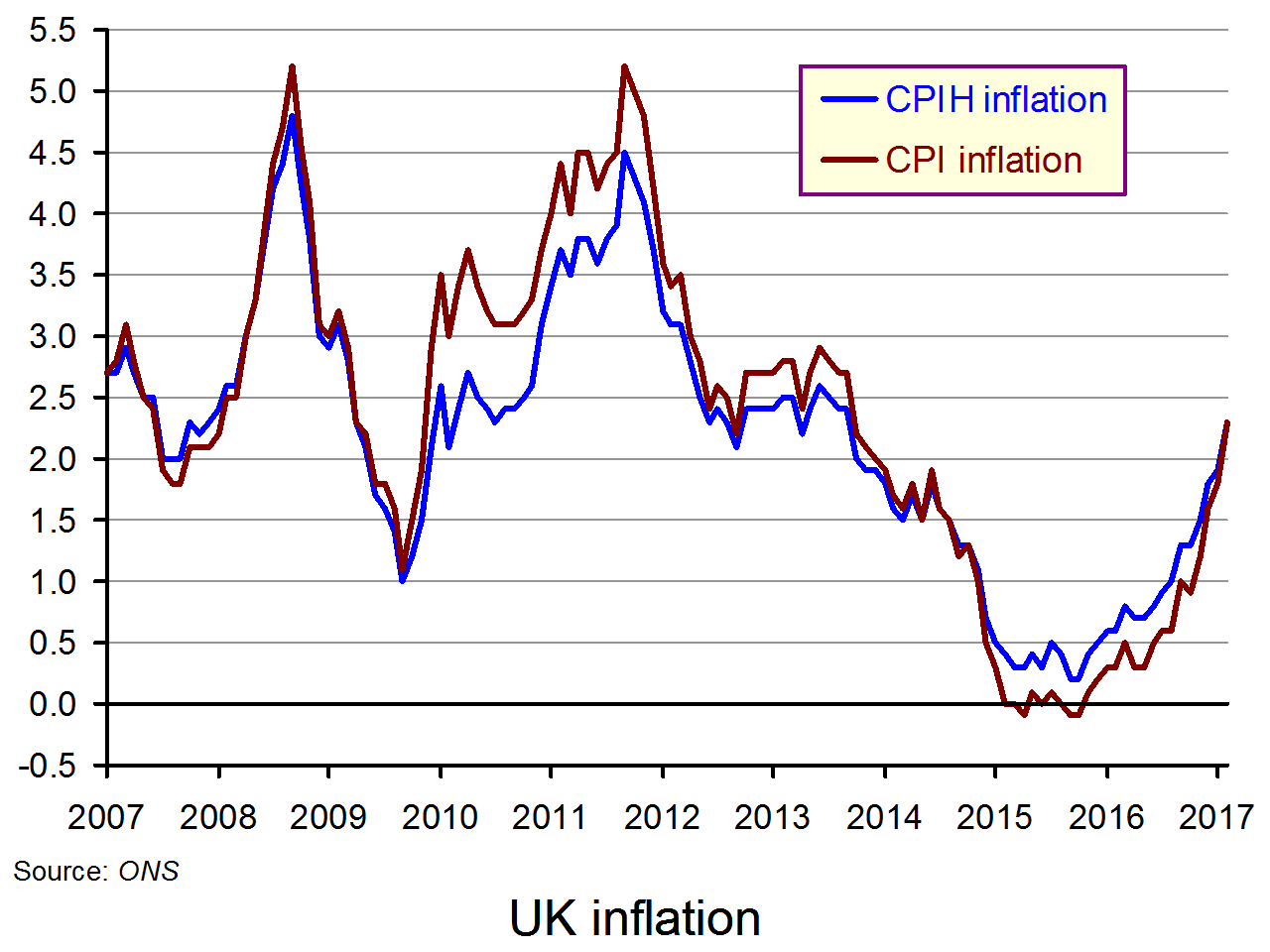 It is expected that inflation will continue to rise over the coming months as the effect of the weaker pound and higher raw material and food prices filter though. The current set of pressures could see inflation peaking at around 3%. If there is a futher fall in the pound or further international price increases, inflation could be pushed higher still – well above the Bank of England’s 2% target. (Click here for a PowerPoint of the chart.)
It is expected that inflation will continue to rise over the coming months as the effect of the weaker pound and higher raw material and food prices filter though. The current set of pressures could see inflation peaking at around 3%. If there is a futher fall in the pound or further international price increases, inflation could be pushed higher still – well above the Bank of England’s 2% target. (Click here for a PowerPoint of the chart.)
The higher inflation means that firms are facing a squeeze on their profits from two directions.
First, wage rises have been slowing and are now on a level with consumer price rises. It is likely that wage rises will soon drop below price rises, meaning that real wages will fall, putting downward pressure on spending and squeezing firms’ revenue.
Second, input prices are rising faster than consumer prices. In the 12 months to February 2017, input prices (materials and fuels) rose by 19.1%, putting a squeeze on producers. Producer prices (‘factory gate prices’), by contrast, rose by 3.7%. Even though input prices are only part of the costs of production, the much smaller rise of 3.7% reflects the fact that producer’s margins have been squeezed. Retailers too are facing upward pressure on costs from this 3.7% rise in the prices of products they buy from producers.
One of the worries about the squeeze on real wages and the squeeze on profits is that this could dampen investment and slow both actual and potential growth.
 So will the Bank of England respond by raising interest rates? The answer is probably no – at least not for a few months. The reason is that the higher inflation is not the result of excess demand and the economy ‘overheating’. In other words, the higher inflation is not from demand-pull pressures. Instead, it is from higher costs, which are in themselves likely to dampen demand and contribute to a slowdown. Raising interest rates would cause the economy to slow further.
So will the Bank of England respond by raising interest rates? The answer is probably no – at least not for a few months. The reason is that the higher inflation is not the result of excess demand and the economy ‘overheating’. In other words, the higher inflation is not from demand-pull pressures. Instead, it is from higher costs, which are in themselves likely to dampen demand and contribute to a slowdown. Raising interest rates would cause the economy to slow further.
Videos
 UK inflation shoots above two percent, adding to Bank of England conundrum Reuters, William Schomberg, David Milliken and Richard Hunter (21/3/17)
UK inflation shoots above two percent, adding to Bank of England conundrum Reuters, William Schomberg, David Milliken and Richard Hunter (21/3/17)
 Bank target exceeded as inflation rate rises to 2.3% ITV News, Chris Choi (21/3/17)
Bank target exceeded as inflation rate rises to 2.3% ITV News, Chris Choi (21/3/17)
 Steep rise in inflation Channel 4 News, Siobhan Kennedy (21/3/17)
Steep rise in inflation Channel 4 News, Siobhan Kennedy (21/3/17)
 U.K. Inflation Gains More Than Forecast, Breaching BOE Goal Bloomberg, Dan Hanson and Fergal O’Brien (21/3/17)
U.K. Inflation Gains More Than Forecast, Breaching BOE Goal Bloomberg, Dan Hanson and Fergal O’Brien (21/3/17)
Articles
Inflation leaps in February raising prospect of interest rate rise The Telegraph, Julia Bradshaw (21/3/17)
Brexit latest: Inflation jumps to 2.3 per cent in February Independent, Ben Chu (21/3/17)
UK inflation rate leaps to 2.3% BBC News (21/3/17)
UK inflation: does it matter for your income, debts and savings? Financial Times, Chris Giles (21/3/17)
Rising food and fuel prices hoist UK inflation rate to 2.3% The Guardian, Katie Allen (21/3/17)
Reality Check: What’s this new measure of inflation? BBC News (21/3/17)
Data
UK consumer price inflation: Feb 2017 ONS Statistical Bulletin (21/3/17)
UK producer price inflation: Feb 2017 ONS Statistical Bulletin (21/3/17)
Inflation and price indices ONS datasets
Consumer Price Inflation time series dataset ONS datasets
Producer Price Index time series dataset ONS datasets
European Brent Spot Price US Energy Information Administration
Statistical Interactive Database – interest & exchange rates data Bank of England
Questions
- If pries rise by 10% and then stay at the higher level, what will happen to inflation (a) over the next 12 months; (b) in 13 months’ time?
- Distinguish between demand-pull and cost-push inflation. Why are they associated with different effects on output?
- If producers face rising costs, what determines their ability to pass them on to retailers?
- Why is the rate of real-wage increase falling, and why may it beome negative over the coming months?
- What categories of people are likely to lose the most from inflation?
- What is the Bank of England’s remit in terms of setting interest rates?
- What is likely to affect the sterling exchange rate over the coming months?
 Economists were generally in favour of the UK remaining in the EU and highly critical of the policy proposals of Donald Trump. And yet the UK voted to leave the EU and Donald Trump was elected.
Economists were generally in favour of the UK remaining in the EU and highly critical of the policy proposals of Donald Trump. And yet the UK voted to leave the EU and Donald Trump was elected.
People rejected the advice of most economists. Many blamed the failure of most economists to predict the 2007/8 financial crisis and to find solutions to the growing gulf between rich and poor, with the majority stuck on low incomes.
So to what extent are economists to blame for the rise in populism – a wave that could lead to electoral upsets in various European countries? The podcast below brings together economists and politicians from across the political spectrum. It is over an hour long and provides an in-depth discussion of many of the issues and the extent to which economists can provide answers.
Podcast
 Should economists share the blame for populism? Guardian Politics Weekly podcast, Heather Stewart, joined by Andrew Lilico, Ann Pettifor, Jonathan Portes, Rachel Reeves and Vince Cable (23/2/17)
Should economists share the blame for populism? Guardian Politics Weekly podcast, Heather Stewart, joined by Andrew Lilico, Ann Pettifor, Jonathan Portes, Rachel Reeves and Vince Cable (23/2/17)
Questions
- Why has globalisation become a dirty word?
- Assess the arguments for and against an open policy towards immigration?
- In what positive ways may economists contribute to populism?
- Do economists concentrate too much on growth in GDP rather than on its distribution?
- Give some examples of ways in which various popular interpretations of economic phenomena may confuse correlation with causality.
- Why did the proportions of people who voted for and against Brexit differ considerably from one part of the country to another, from one age group to another and from one social group to another?
- In what ways have economists and the subject of economics contributed towards a growth in human welfare?
- What are the advantages and disadvantages of the trend for undergraduate economics curricula to become more mathematical (at least until relatively recently)?
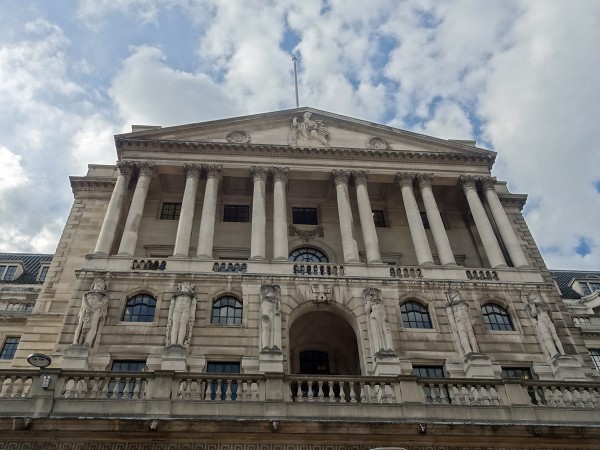 When UK unemployment was 7.7% in July 2013, Mark Carney, the newly arrived governor of the Bank of England, said that the Bank would probably have to rise interest rates when the unemployment rate dropped below 7%. Below that rate, it was expected that inflation would rise. In other words, 7% was the NAIRU – the non-accelerating rate of inflation. The most recent figure for the unemployment rate is 4.8% and yet the Bank of England has not raised interest rates. In fact, in response to the Brexit vote, it cut Bank Rate from 0.5% to 0.25% in August last year. (Click here for a PowerPoint of the chart below.)
When UK unemployment was 7.7% in July 2013, Mark Carney, the newly arrived governor of the Bank of England, said that the Bank would probably have to rise interest rates when the unemployment rate dropped below 7%. Below that rate, it was expected that inflation would rise. In other words, 7% was the NAIRU – the non-accelerating rate of inflation. The most recent figure for the unemployment rate is 4.8% and yet the Bank of England has not raised interest rates. In fact, in response to the Brexit vote, it cut Bank Rate from 0.5% to 0.25% in August last year. (Click here for a PowerPoint of the chart below.)
The NAIRU is a similar, although not identical, concept to the natural rate of unemployment. The natural rate is the equilibrium rate consistent with an overall long-term balance of aggregate labour demand and supply: i.e. the rate after short-term cyclical movements in unemployment have been discounted. It is thus a long-term concept.
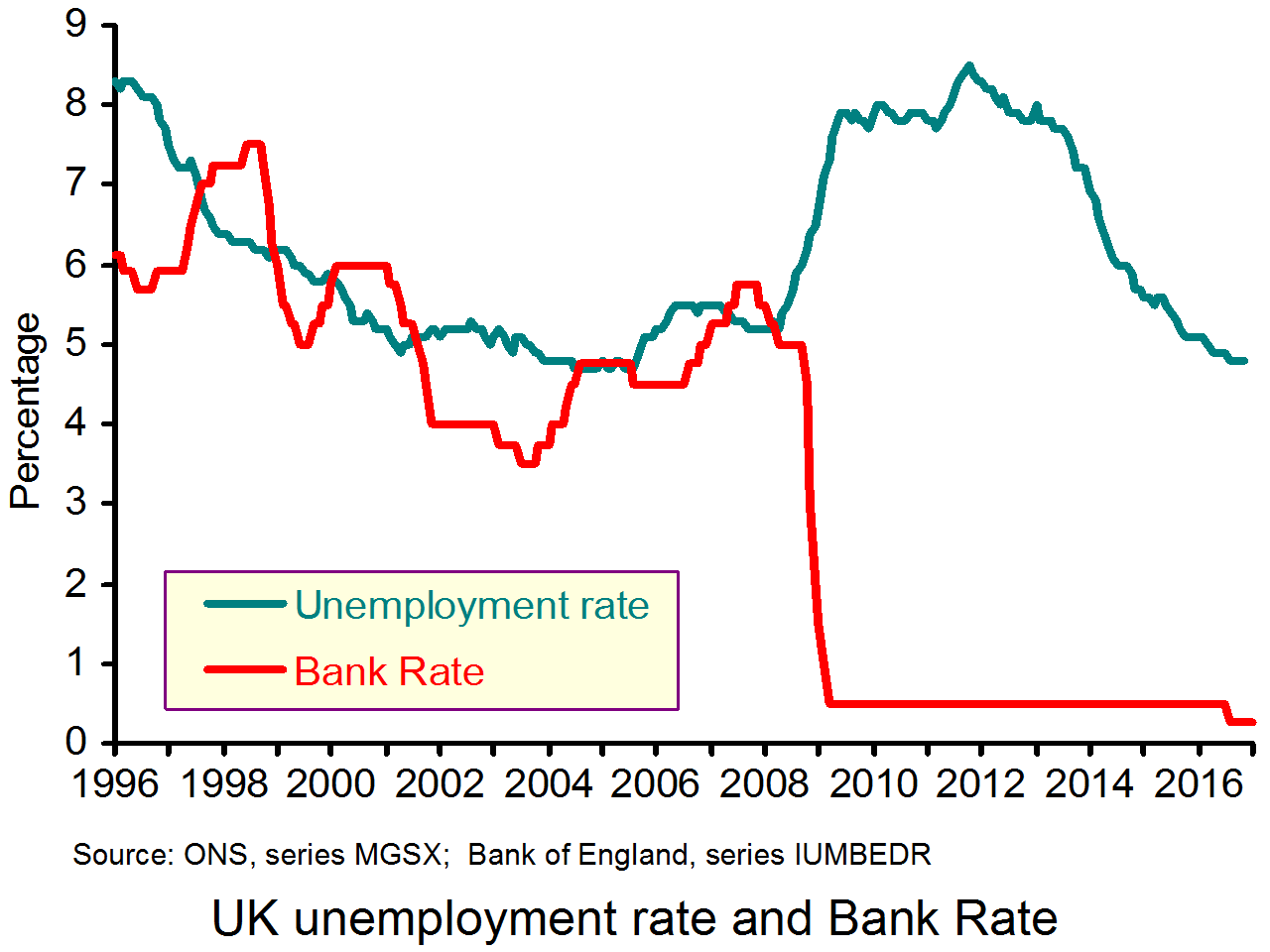 The NAIRU, although similar, focuses on the relationship between inflation and unemployment. With inflation caused solely by demand-side factors, the natural rate and the NAIRU will be similar if not identical. However, if cost-push factors change – say there is a poor harvest, which pushes up food prices and inflation (temporarily), or a substantial depreciation of the exchange rate caused by political factors (such as Brexit) – the NAIRU would increase, at least in the short term, as a higher rate of unemployment would be necessary to stop inflation rising. In the long term, although being defined differently, the NAIRU and the natural rate will be the same.
The NAIRU, although similar, focuses on the relationship between inflation and unemployment. With inflation caused solely by demand-side factors, the natural rate and the NAIRU will be similar if not identical. However, if cost-push factors change – say there is a poor harvest, which pushes up food prices and inflation (temporarily), or a substantial depreciation of the exchange rate caused by political factors (such as Brexit) – the NAIRU would increase, at least in the short term, as a higher rate of unemployment would be necessary to stop inflation rising. In the long term, although being defined differently, the NAIRU and the natural rate will be the same.
In practice, because the Bank of England is targeting inflation at a 24-month time horizon, the NAIRU for the UK at that point could also be seen as the natural rate.
So with the Bank of England not raising interest rates despite the considerable fall in the unemployment rate, does this imply a fall in the natural rate of unemployment? The answer is yes. The reason has to do with changes in the structure of the labour market.
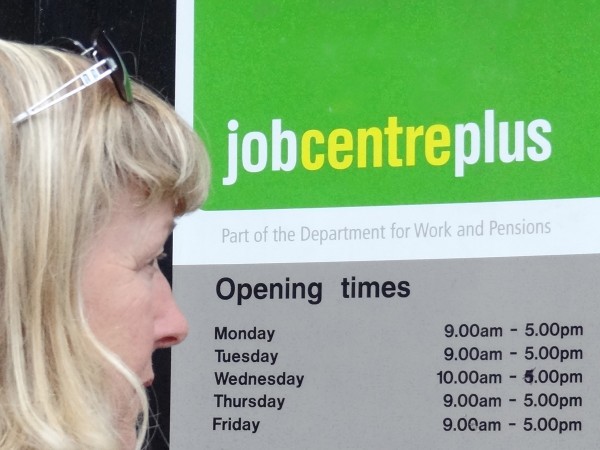 The proportion of young people and women with children returning to the labour market has fallen. Such people have a higher-than-average rate of unemployment since they typically spend a period of time searching for a job.
The proportion of young people and women with children returning to the labour market has fallen. Such people have a higher-than-average rate of unemployment since they typically spend a period of time searching for a job.
Tax and benefit reforms over the years have increased the incentive for the unemployed to take work.
Perhaps the biggest factor is a greater flexibility in the labour market. As union power has waned and as people are increasingly working on flexible contracts, including zero-hour contracts, so this has moderated wage increases. At the same time, many firms are facing increased competition both from abroad and domestically via the Internet. This has put downward pressure on prices and hence on the wages firms are willing to pay.
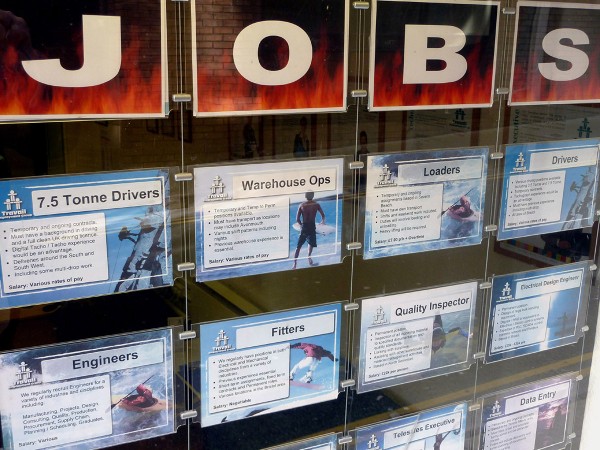 The effect has been a fall in the NAIRU and probably the natural rate. Frictions in the labour market have reduced and people losing their jobs because of changes in industrial structure find it easier to get jobs in low-skilled service industries, where employers’ risks of taking on such workers have fallen because of the loss of rights for such workers.
The effect has been a fall in the NAIRU and probably the natural rate. Frictions in the labour market have reduced and people losing their jobs because of changes in industrial structure find it easier to get jobs in low-skilled service industries, where employers’ risks of taking on such workers have fallen because of the loss of rights for such workers.
So what is the natural rate of unemployment today? It is certainly much lower than 7%; the consensus is that it is probably below 5%. As Kristin Forbes, External MPC Member of the Bank of England stated in a recent speech:
[Unemployment] is forecast to increase gradually from its current 4.8% to a high of 5.0% in the second half of 2017, before falling back to its current rate by the end of 2019. To put this in context, 5.0% was previously believed to be around the UK’s natural rate of unemployment – the rate below which unemployment could not fall without wages picking up to levels inconsistent with sustaining inflation around the 2% target. Unemployment at 5.0% is also below the average unemployment rate for the UK over the pre-crisis period from 1997 to 2007 (when it was 5.5%).
She went on to discuss just what the figure is for the natural, or ‘equilibrium’, rate of unemployment (U*). One problem here is that there is considerable uncertainty over the figure in the current forecast made by the Bank.
[An] assumption in the forecast about which there is substantial uncertainty is of the equilibrium unemployment rate – or U* for short. Since I have been on the MPC, the Committee has assumed that U* was around 5%. This implied that the more by which unemployment exceeded 5%, the more slack existed in the economy, and the less upward momentum would be expected in wages (controlling for other factors, such as productivity growth).
 As part of our annual assessment of regular supply-side conditions this January, Bank staff presented several pieces of analysis that suggested U* may be lower than 5% today [see, for example]. The majority of the MPC voted to lower our estimate of U* to 4.5%, based partly on the persistent weakness of wage growth over the past few years after accounting for other factors in our models. [See page 20 of the February 2017 Inflation Report.]
As part of our annual assessment of regular supply-side conditions this January, Bank staff presented several pieces of analysis that suggested U* may be lower than 5% today [see, for example]. The majority of the MPC voted to lower our estimate of U* to 4.5%, based partly on the persistent weakness of wage growth over the past few years after accounting for other factors in our models. [See page 20 of the February 2017 Inflation Report.]
My own assessment, however, suggested that although U* was likely lower than 5% today, it is likely not as low as 4.5%. If true, this would suggest that there is less slack in the economy than in the MPC’s central forecast, and wage growth and inflation could pick up faster than expected.
Against that, however, uncertainty related to Brexit negotiations could make firms more cautious about raising wages, thereby dampening wage growth no matter where unemployment is relative to its equilibrium. Moreover, even if we could accurately measure the level of U* in the economy today, it could easily change over the next few years as the labour force adjusts to any changes in the movement of labour between the UK and European Union.
Determining the precise figure of the current natural rate of unemployment, and predicting it for the medium term, is very difficult. It involves separating out demand-side factors, which are heavily dependent on expectations. It also involves understanding the wage elasticity of labour supply in various markets and how this has been affected by the increased flexibility of these markets.
Articles
When will Britons get a pay rise? The Guardian, Phillip Inman (26/2/17)
BoE decision, Inflation Report – Analysts react DigitalLook, Alexander Bueso (2/2/17)
Bank of England hikes UK economic growth forecasts but warns of rising inflation The Telegraph, Szu Ping Chan (2/2/17)
Bank of England publications
Inflation Report Bank of England (February 2017)
A MONIAC (not manic) economy Bank of England Speeches, Kristin Forbes (8/2/17)
The labour market Bank of England Speeches, Michael Saunders (31/1/17)
Questions
- Distinguish between the following terms: natural rate of unemployment, NAIRU, equilibrium rate of unemployment, disequilibrium rate of unemployment.
- For what reasons did the Monetary Policy Committee members feel that the equilibrium rate of unemployment might be as low as 4.25%?
- Why might it be as high as 5%?
- How are changes in migration trends likely to affect (a) wage growth and (b) unemployment?
- How is the amount of slack in an economy measured? What impact does the degree of slack have on wage growth and inflation?
- What is meant by the ‘gig’ economy? How has the development of the gig economy impacted on unemployment and wages?
- Why has there been a considerable rise in self employment?
- How may questions of life style choice and control over the hours people wish to work impact on the labour market?
- If people are moving jobs less frequently, does this imply that the labour market is becoming less flexible?
- Why may firms in the current climate be cautious about raising wages even if aggregate demand picks up?
 According to the Halifax house price index, house prices fell in the UK in the three months to April. This is the first quarterly fall since 2012. The Nationwide index (see below), shows that prices in April were 0.4% lower than in March (although the 3-month rate was still slightly positive).
According to the Halifax house price index, house prices fell in the UK in the three months to April. This is the first quarterly fall since 2012. The Nationwide index (see below), shows that prices in April were 0.4% lower than in March (although the 3-month rate was still slightly positive). Lower house prices and falling sales is a picture repeated in many parts of the UK. It is particularly marked in central London. There, estate agents have begun to offer free gifts to purchasers. As The Guardian puts it:
Lower house prices and falling sales is a picture repeated in many parts of the UK. It is particularly marked in central London. There, estate agents have begun to offer free gifts to purchasers. As The Guardian puts it:












